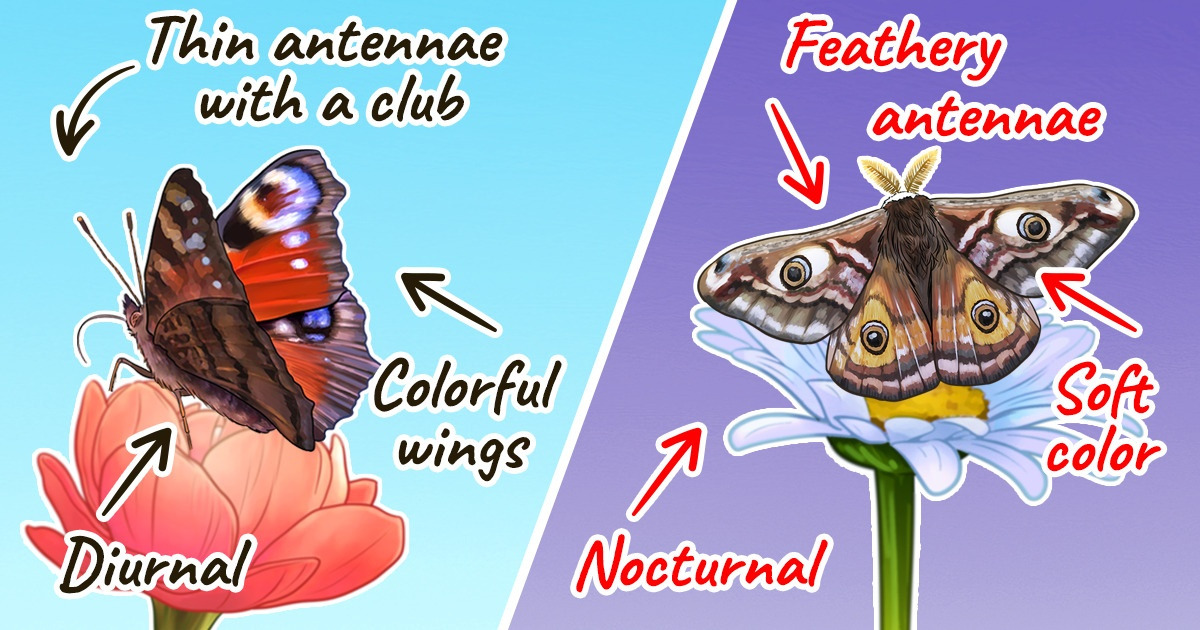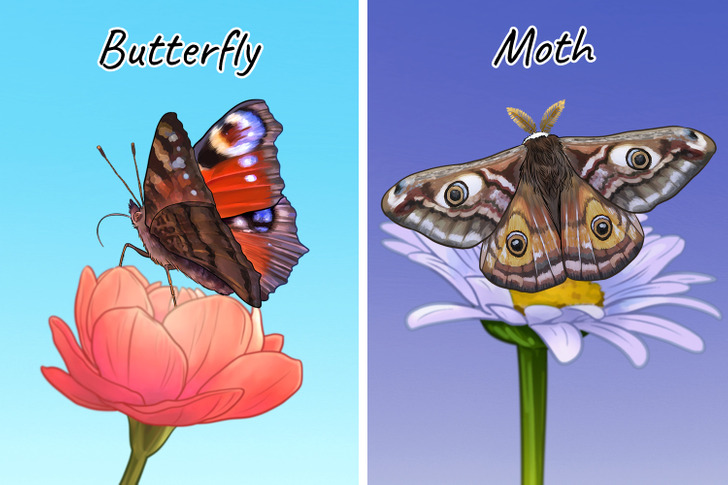The Difference Between a Moth and a Butterfly

You’ve probably come across a dark butterfly with feathery antennae. But what if we told you that you were not looking at a butterfly, and that it was a moth?
These insects look very much alike. With 5-Minute Crafts, you’ll learn how to distinguish them from each other.
- Active hours
Butterflies are diurnal insects, while moths are nocturnal. If you see an insect sitting on a flower and sipping on nectar on a summer day, you can say with certainty that this is a butterfly. - Behavior
Butterflies need sunlight to fly. They use it to raise their body temperature.
Moths prefer wooded areas or dark environments for their habitat. When indoors, they prefer to stay in closets or pantries. They also need heat to fly, but they heat themselves using the vibrations of their wings. - Color
Most butterflies are more colorful than moths. Tiny scales on their wings reflect light and create a colorful, intricate pattern. The wings of moths are a little different — nocturnal insects don’t need reflective scales that can attract the unnecessary attention of predators. Therefore, most moths have a soft, camouflage color. - Antennae
Butterflies have thin, threadlike antennae with a club on the tip. And they use them for smell and balance.
The antennae of moths are feathery. They are used not only for orientation in space but also, to help moths find food and partners. It’s believed that these moths’ antennae are more sensitive than those of butterflies. You can find moths with antennae similar to butterflies, but you won’t find butterflies with feathery antennae.

- Appearance
The body of a moth is shorter and plumper, and slightly furry, while the body of a butterfly seems to be more slender, long, and thin. There is a structure called a frenulum between the front and hind wings of moths, while butterflies don’t have this connecting structure. - Resting posture
When resting, moths, as a rule, don’t fold their wings, but hold them flat. While butterflies often hold their wings together above their body when resting on a flower. However, you can also see a butterfly with its wings open. This happens when it’s sunbathing. - Pupa stage
When transforming from a caterpillar to a chrysalis, a butterfly makes a shiny, hard, and smooth cocoon. While most moths create a silky cocoon. - Lifespan
Usually, an adult butterfly lives no longer than 2 weeks, although some species can hibernate throughout the winter, so they live for several months.
Moths can live from 7 days to 10 months — depending on the species. However, most moths don’t reach old age because they get eaten by predators.
Share This Article